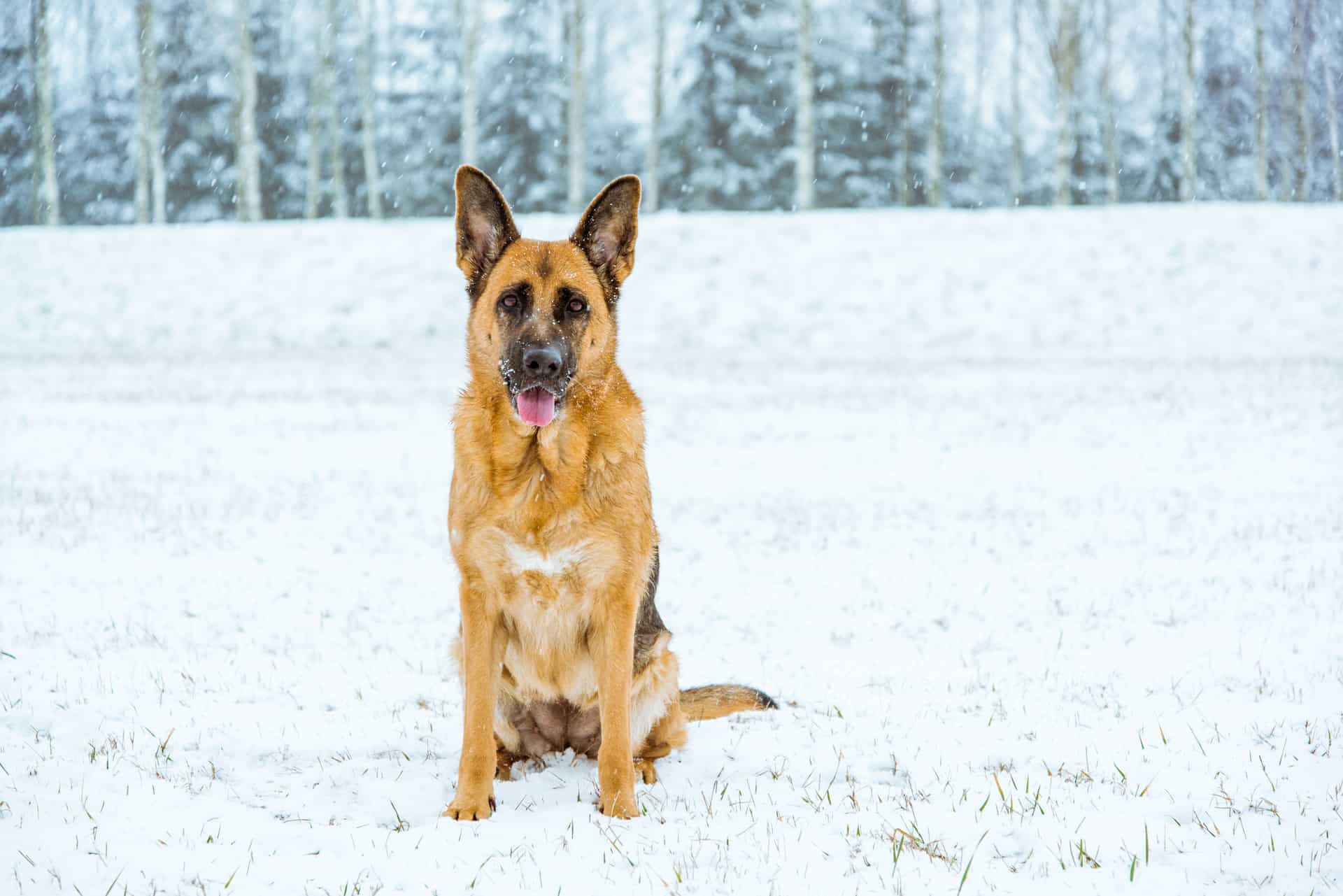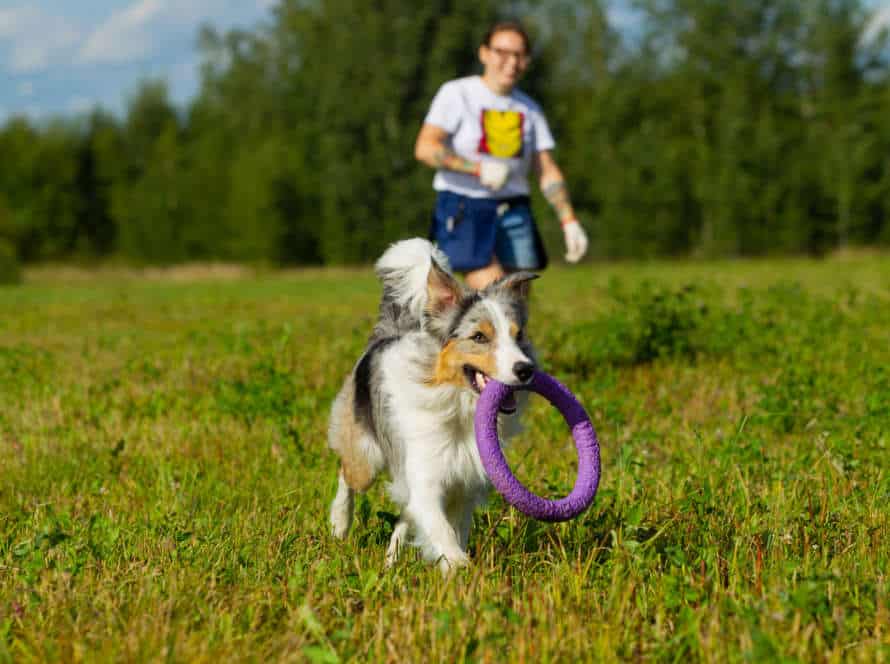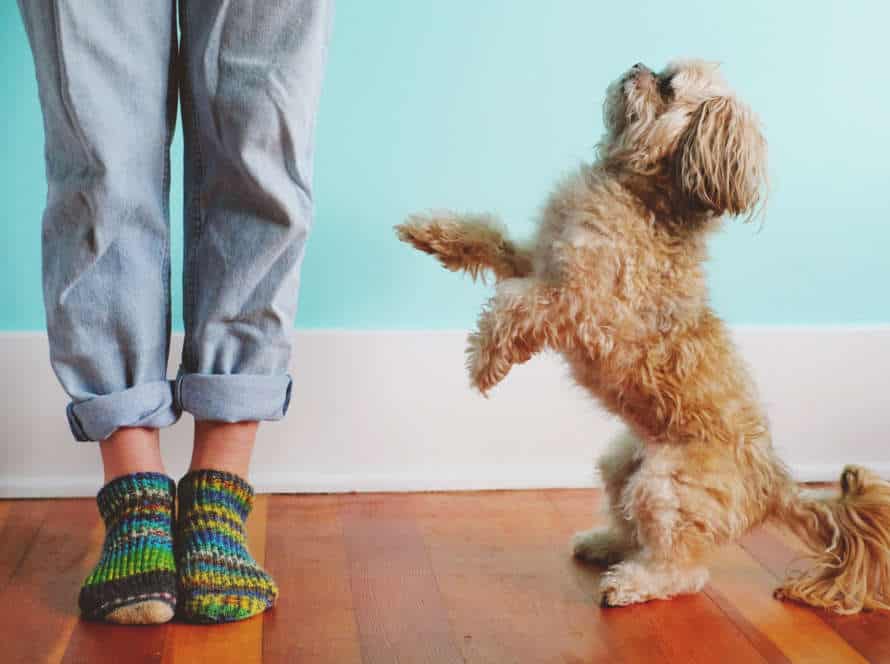The Impact of Strangers on Your Dog’s Vocalizations
Strangers can cause a range of vocalizations in dogs, like barking, growling, whining, and whimpering. This is a natural response and depends on their breed, personality, and past experiences.
To manage it, socialize your pup from a young age and train them using positive reinforcement techniques. Also, give them a secure place to retreat to when they feel overwhelmed.
By understanding the impact of strangers and taking steps to manage behavior, you can make your pup feel more comfortable in social situations.
Understanding Canine Vocalizations
Vocalizations are essential for canine communication. Dogs use them to express emotions and intentions such as fear, excitement and dominance. It’s vital for understanding a dog’s motivations and feelings to comprehend the context of their vocalizations.
Thus, one thing to consider is how strangers can impact canine vocalizations.
Types of vocalizations
Dogs have many vocalizations to communicate. Here are the most common ones you’ll hear from your pet:
- Barking – usually used when there is danger, or to say hello to their owner.
- Whining – usually an expression of distress or anxiety, asking for attention.
- Growling – a warning, they’re unhappy and might be aggressive.
- Howling – a long sound to communicate from far away, or to get their owner’s attention. It’s a sound more associated with wolves.
By understanding your pup’s vocalizations, you can understand their behavior and respond better.
Why dogs vocalize
Dogs use vocalizations to express themselves. Barking, howling, growling, and whining are all common types of canine vocalizations, each with a unique tone and meaning.
When a stranger is near, a dog may bark or growl to alert them of potential danger or to show their dominance. On the other hand, if a dog is comfortable with the stranger, they may whine or make soft noises to seek attention or affection.
It’s essential to understand your dog’s vocalizations and body language to interpret their needs and respond accordingly.
Typical vocalizations in various situations
Dogs use vocalizations to tell us what they need, feel, and want. It’s important to know what these sounds mean, especially when strangers are around.
Barking can mean various things, like a warning, excitement, or desire for attention. Growling is a sign of aggression or discomfort. Howling is a long and sad sound that can mean loneliness, boredom, or worry. Whining is a high-pitched sound that shows nervousness, being upset, or needing attention.
When strangers are near, dogs may bark, growl, or be quiet or passive. It’s essential to understand the vocalizations to keep everyone safe.
Pro tip: If your pup gets anxious or aggressive with strangers, consider getting help from an expert in dog behavior.
The Effect of Strangers on Dogs
Strangers can affect a dog’s vocalization. When a pup spots someone new, it may bark, growl, whine, or howl. Some dogs stay serene and silent. Others, however, may become overly excited or scared. In this article, we’ll look into the effects of strangers on a dog’s behavior. We’ll also investigate the various vocalizations they can make.
Causes of dogs barking at strangers
Dogs bark at unknown people for a variety of reasons. These stem from their survival instincts and past experiences.
Four causes of this behavior are:
- Territorial Behavior – They may think the stranger is a threat to their home and family.
- Fear or Anxiety – Dogs that have had negative experiences may bark in fear.
- Lack of Training – If a dog is not taught to be calm, they will bark.
- Breeding Instincts – Certain breeds like guard dogs and herding dogs may bark due to their natural instincts.
By understanding why dogs bark, you can better train them and prevent excessive barking.
The impact on dogs of being approached by strangers
Coming close to dogs can have a big effect on their feelings. It’s super important to know how to do it right, to keep away negative reactions. Dogs can’t talk using words, they use vocalizations to show how they feel. When approached by strangers, they may bark, growl or whimper. That’s how they express their fear, stress or territoriality.
But, if their owners expose them to people who are nice and well-meaning, it can help them become more social. It’s important for owners to be aware of their dog’s emotions and to train them to not be aggressive when meeting strangers, but to be protective of their owners. Plus, owners should use positive reinforcement and make the training sessions short and fun for their furry friends.
Different responses to vocalize from strangers
Every pup has their own way of reacting to new voices. It’s important for owners to get an idea of how their pup reacts to unfamiliar sounds. Some bark loudly, while others whine or growl. Here are some tips to help your doggo:
- Socialization: Introduce your pup to different people and noises from an early age.
- Positive Reinforcement: Give them treats or compliments when they stay calm around strangers.
- Body Language: Pay attention to how they react to strangers. Wagging tail? Raised hackles?
- Training: Professional dog trainers can help with barking or aggression.
- Pro Tip: Understanding your pup’s response to strangers can help create a positive, stress-free environment for them.
How to Manage Stranger Interaction to Reduce Vocalizations in Dogs
Strangers? They can cause strong reactions in dogs, leading to yapping, howling, and other vocalizations. This can be tough on your pup, the stranger, and you! To reduce these issues, there are strategies that can help. In this article, we’ll explore these strategies and how they can reduce stress for everyone.
Positive Stranger interactions
Positive interactions with strangers can make your dog more peaceful and enjoyable to be around. Here are some tips to manage these interactions:
- Socialize your pup early on. Let them meet new people and explore new situations.
- Reward calm and friendly behavior with treats, praise and playtime.
- Teach them basic commands like “sit” and “stay”.
- Use a leash and harness to help control their movements and prevent aggression.
By following these tips, you can help your pup feel more comfortable around strangers, and reduce their vocalizations. It will create a happier, healthier atmosphere for everyone.
Obedience training to address excessive barking
Excessive barking in dogs is a common issue. Obedience training can help address it. One useful approach is to manage how strangers interact with your dog, to reduce vocalizations.
Here’s how:
- Get a family member or friend who your dog doesn’t know.
- Let the stranger come closer to your home.
- When your dog starts barking, say “quiet” or “no barking” and give a treat as a reward.
- Do this a few times, increasing the distance each time.
- With consistent training and rewards, your dog can learn to stay calm in the presence of strangers.
Pro tip: Keep up the training, be patient and only use positive reinforcement to reward good behavior.
Management techniques for when strangers approach
When strange people come close to dogs, vocalizations like barking, growling, and whining can happen. To stop this and make sure your pup is safe and happy, follow these tips:
- Train your dog to obey simple orders like “sit”, “stay”, and “come” to take their focus away from strangers.
- Keep your dog leashed when outdoors and use a muzzle if you need to.
- Teach your pup to relate strangers with good things such as treats and toys.
- Don’t force your dog to interact with strangers, and introduce them to new people in a calm atmosphere.
- If your dog gets aggressive around strangers, get help from a professional trainer or behaviorist to come up with a management plan.
The Role of Socialization in Vocalizations
Socialization is essential for a pup’s growth. It assists them in understanding how to interact with people and to recognize unfamiliar faces. It also affects their vocalizations, which can guide how they interact with others. Grasping the role of socialization in vocalizations is key in instructing a pooch to comprehend and respect strangers. Let’s dive deeper into this matter.
The importance of socialization efforts for dogs
Socialization is key for a pup’s growth. Introduce your furry pal to people, animals, and environments from a young age. Doing so will help them learn social skills, and stop behavioral issues in the future.
Here’s why it’s important:
- Anxiety Reduction: Socialization helps dogs adjust to new things, and lowers fear and aggression around strangers.
- More Confidence: Exposing them to different places and people can boost their trust in you, and make them calmer in stressful or unusual conditions.
- Less Negative Habits: No socialization can lead to negative behavior and aggression to people and other animals. Introducing them to various things can help prevent this.
Overall, socializing is an essential part of pet training. It’s important for their happiness and health.
Socializing a dog to reduce stranger barking
Socializing your pup is a must for reducing stranger barking. It helps with fear and anxiety around new people and places. To socialize your dog, start by:
- taking them for walks in different environments
- introducing them to new people and animals
- providing positive reinforcement for good behavior.
It’s also important to teach your dog obedience commands and be the pack leader. This helps prevent the need for barking at strangers. Each pup has a different personality, so be patient and consistent when socializing.
How a properly socialized dog will interact with strangers
A socially-trained pup is more likely to act calmly and happily when around strangers. This is because they have been exposed to different social situations and taught how to behave.
Socialization is essential for a well-mannered dog that can communicate appropriately. If not socialized, dogs may become scared or impulsive in certain circumstances, including meeting unknown people.
A properly socialized pup will greet strangers in a friendly and laid-back way, not barking excessively or being aggressive. They will be inquisitive and interested in making new acquaintances but also obey their owner’s orders to sit, stay, or move away from strangers when necessary.
Remember: Socialization should be a positive and gradual experience for your canine. Introducing them to plenty of people, places, sounds, and other animals will help them build trust and comprehend their environment better.
Techniques for Calming Strangers Anxious Dogs
It’s common for dogs to vocalize their fear and anxiety when around strangers. But with proper techniques, we can help ease their nervousness. Here are a few ways to make your pooch more comfortable when meeting new people:
- Accustom your pup to being around strangers by introducing them at a comfortable distance.
- Familiarize your pup with different people’s voices by playing recordings of different people talking.
- Offer treats to your pup when they are near strangers.
- Let strangers give your pup treats and praise.
- Show your pup that you are calm and relaxed when you are around strangers.
- Provide your pup with lots of positive reinforcement when they are around strangers.
By following these tips, you can help your pup become more relaxed and reduce their vocalizations when around strangers.
How to use pheromones to alleviate stress
Pheromones are a great way to reduce stress in dogs, especially anxious ones. These chemicals occur naturally and let dogs communicate. Adaptil is a synthetic form of pheromones which calms dogs in difficult moments.
Here’s how to use pheromones to ease stress:
- Diffuser or collar: Plug in the diffuser or get a collar for your dog. It will disperse the synthetic pheromones to help relax them.
- Spray: Apply the spray on the bedding, crate, or anywhere else your dog spends time.
- Use other calming techniques too: For better results, combine pheromones with exercises, mental stimulation, and positive reinforcement training.
Pro Tip: Talk to your vet before using any product on your dog to ensure it’s safe and effective.
Strategies for reducing anxiety through exposure
Exposure is a popular strategy to reduce anxiety in dogs that get scared around strangers. Expose your pup to the stimuli that cause fear and teach them coping skills. Reward them for progress. Here are few tips to calm your pet:
- Counter-conditioning: Give treats or attention when they meet strangers. Create a positive connection.
- Desensitization: Gradually expose the dog to strangers in a controlled setting. Monitor comfort levels as they acclimate.
- Practice relaxation techniques: Do breathing and deep relaxation exercises with your pup to keep them relaxed when around strangers.
- Pro tip: Give your dog exercise, a balanced diet, and a cozy living area to reduce anxiety.
Aids like music, herbal remedies and compression garments.
If your pup’s anxious ’round strangers, here’re a few tips to soothe ’em:
- Music – Play some calming tunes at a low volume. Classical, meditation, or music designed specifically for dogs can help.
- Herbal remedies – Chamomile, lavender, or valerian root are natural remedies that can help. Ask your vet before giving your pup any herbal remedies, though, as they may interact with other meds.
- Compression garments – Compression vests like thundershirts can create a sense of comfort and security.
It’s important to know every pup’s unique, and sometimes one calming technique won’t be enough. Employing multiple techniques might have a better effect.
Frequently Asked Questions
1. How do strangers affect my dog’s vocalizations?
A: Strangers can cause anxiety or excitement in dogs, leading to changes in their vocalizations. Some dogs may bark more, while others may become quiet and subdued.
2. Is it normal for my dog to bark at strangers?
A: It is common for dogs to bark at strangers, especially if they perceive them as a potential threat to their home or family. However, excessive barking can be a sign of anxiety or aggression and should be addressed with training.
3. Can strangers teach my dog to bark or be vocal?
A: Yes, dogs can learn by observing and imitating others. If a stranger engages with your dog in a loud or exciting way, your dog may learn to be more vocal in their presence.
4. How can I reduce my dog’s vocalizations around strangers?
A: Training and socialization can help your dog learn to be calm and confident around strangers. Desensitization and counter-conditioning techniques can also be useful in reducing fearful or aggressive reactions.
5. What if my dog becomes aggressive towards strangers?
A: Aggression towards strangers can be dangerous and should be addressed immediately with the help of a professional dog behaviorist. It is important to keep your dog and others safe while addressing the issue.
6. Can strangers actually have a positive impact on my dog’s vocalizations?
A: Yes, positive interactions with strangers can help your dog become more outgoing and confident, which may lead to more positive vocalizations. It is important to always supervise interactions between your dog and strangers to ensure safety for everyone involved.







